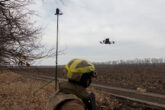February 23, 2022
Don't Trust the Process: Moving from Words to Actions on the Indo-Pacific Posture
This article was originally published by War on the Rocks.
Far from being a deterrent to aggression, American military bases in Asia are a tempting target. U.S. Indo-Pacific bases are vulnerable to myriad Chinese attacks. Threats to airbases are especially worrying since they host so much concentrated U.S. combat power, incentivizing a Chinese first strike. Actions to address these problems have been tardy and insufficient, despite repeated Pentagon statements prioritizing U.S. posture in the region.
Few defense analysts focused on the Indo-Pacific would quibble with these statements, yet these problems continue, and solutions remain unclear. Two recent War on the Rocks articles by my colleagues Stacie Pettyjohn and Dustin Walker aptly describe the Pentagon’s failure to improve U.S. posture in the Indo-Pacific. Pettyjohn cites a Cold War-era Air Force chief of staff who emphatically argued for airbase resiliency in Europe as a model for today’s senior leaders to advocate for passive defenses. Walker prods the secretary and deputy secretary of defense to take a more aggressive role on force posture. Both argue that these problems cannot be solved absent senior leader engagement.
Moving from words to poured concrete requires subordinate organizations and processes to execute guidance and policies.
I agree with both authors that senior leader engagement is necessary, but I believe the Pentagon also needs to reform the processes and organizations responsible for overseeing posture. Secretaries and service chiefs should prioritize posture, but they can’t fix this issue without help.
Fixing the Indo-Pacific posture will require targeted policies to incentivize the implementation of posture initiatives in the near term in addition to long-term reforms to ensure that posture considerations have a more prominent role in the defense budgeting process.
Read the full article from War on the Rocks.
More from CNAS
-
Defense / Transatlantic Security
When Defense Becomes Destruction: Austria-Hungary’s Mistake and Ukraine’s RiskThis article was originally posted on War on the Rocks. The southeastern Polish city of Przemyśl, with its elegant 19th century Habsburg-era train station, remains one of the ...
By Franz-Stefan Gady
-
Defense / Transatlantic Security
Ukraine’s Catch-22 MomentThis article was originally published in the Financial Times. In Joseph Heller’s wartime classic, Catch-22, the protagonist Yossarian seeks out the US army surgeon Doc Daneeka...
By Franz-Stefan Gady
-
CNAS Insights | Budgetary Own Goals Undermine “Speed and Volume”
On November 7, Secretary of Defense Pete Hegseth laid out a plan to overhaul the Department of Defense’s (DOD’s) acquisition system. Placing an emphasis on delivering new capa...
By Philip Sheers, Carlton Haelig & Stacie Pettyjohn
-
Drones: Who Is Making the New Weapons of War?
From Ukraine and Russia to Gaza and Sudan, drones have become a key weapon of war. Which companies are making them, and profiting from this rapidly expanding but controversial...
By Stacie Pettyjohn




